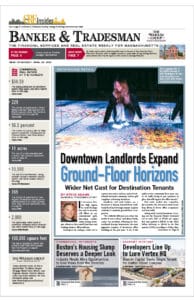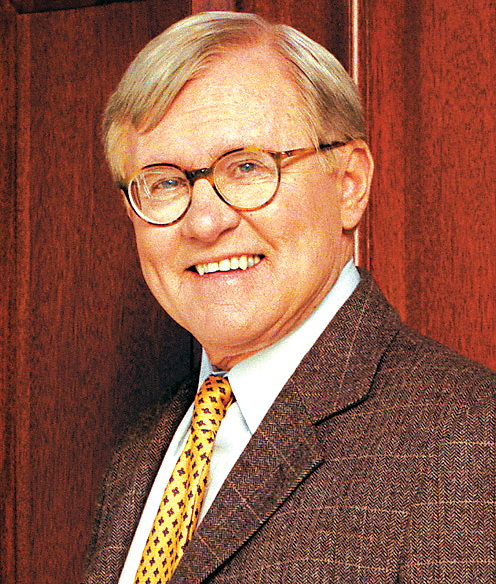Flying cars might still be a ways off, but driverless cars are much closer to reality than most consumers realize – and it’s difficult to overstate how much they’re going to impact the economy, perhaps most dramatically real estate.
“The belief that this is hare-brained is not very reflective of how other changes like this have happened,” said Jason Schreiber, senior principal at Stantec Urban Places. “The thing the public doesn’t appreciate is this was originally being planned by Federal Highway Administration for no later than 1990. The technologies that existed then aren’t very different than what we have now. The biggest difference is in processing powers and the fact that it is scalable at an affordable cost.”
To begin, shared autonomous vehicles (SAV) will destroy the current business model of ride-hailing apps like Uber and Lyft, which is why both companies are trying to get in on the ground floor through various partnerships. An SAV works rather like a ride hailed via Uber or Lyft – except there’s no driver, currently a major part of the companies’ business models, and one of the most expensive. The driver accounts for approximately 50 to 60 percent of the cost on those rides, according to Stantec’s research. But that’s just the beginning of the savings, Schreiber said.
“It will be safer for people,” he said. “That’s always been the number one thing the federal and state governments have been pushing for, because of all the health and safety costs and emergency costs. I don’t know what firefighters will do when nine out of 10 of their calls go away. Same thing with the police.”
Consider just a few statistics: there were 37,461 highway fatalities in the U.S. in 2016, according to the Insurance Institute for Highway Safety. The institute estimates that at least 81 percent of all crashes are the result of human error. It’s hard to put a dollar value on that, but the Department of Transportation has: It values a single statistical human life at $9.6 million.
“Vehicles that work together and communicate with each other electronically and to other signals will know to slow down or speed up based on what they see far sooner than human drivers,” Schreiber said. “Road maintenance will also go down dramatically.”
The most likely business model will involve consumers buying a in a company’s SAV and paying an expensive fee per mile for each trip. Alternatively, they’ll be able to buy their own AV, which will eventually cost about the same as a new car today, according to William F. Lyons Jr., president and CEO of Fort Hill Cos, a Boston-based architecture and infrastructure design firm.
“Look at Tesla’s Level 3 AV; it’s available now and costs about $60,000,” Lyons said. “In 2019 General Motors and Volvo are fielding huge fleets of autonomous vehicles. Uber is accepting delivery of 24,000 AVs. That will push prices down.”
Driving Changes in Real Estate
Municipalities and state budgets will be shocked by the sudden loss of revenue from public parking, parking tickets and speeding tickets, as well as the gasoline tax, as these cars will eventually all be electric, Lyons said.
“Electric vehicles have about one-sixth the moving parts as an internal combustion engine vehicle, so they’re easier to maintain and keep on the road,” he said. “The horizon we’re talking about for significant adoption is three to five years.”
Municipal parking garages are typically financed over 30 years, but demand for parking is going to drop significantly in the age of autonomous vehicles, so municipalities had better think long and hard how to structure the financing of new garages, Lyons said. A new mortgage or refinancing in 2018 could leave a large, unused building that stops paying for itself before the construction is paid off.
The state and some municipalities are beginning to plan to adapt to changes like this, but Lyons is afraid they may have started too late and are moving too slowly.
“The city of Boston makes an enormous amount of money from parking fees and tickets,” he said. “They’re going to have to reinvent their revenue model. It’s a complex, thorny problem. There are going to be zoning considerations when parking is no longer required. We need to lean forward as a society, because AVs are coming fast. Boston 2030 is unfortunately light on autonomous vehicles. This will have dramatic long-term effects. What is society going to do? Let market forces dictate land use patterns?”
That precedent has already been set, said Schreiber: “If municipalities don’t start figuring out what different scenarios are going to be, they’ll be behind the eight ball,” he said. “Think about it: The interstate highway expansion was another great innovation that ruined many downtowns and created problems we all still live with today.”
The proliferation of AVs will have an outsize effect on the state’s far-flung suburbs; some could face ruination while others flourish.
“The cost of commuting will decrease and productivity will increase,” Schreiber said. “That’s the advantage people will see and take advantage of. The hope is there is a balance struck where suburbs will benefit more by making their connections to transit and automated transit better. That’s the key that suburbs need to take advantage of. There is a big threat that autonomy can negatively impact community and lifestyle if we don’t think smartly about how efficiencies can be leveraged.”
It will also change future building and land use.
“I think the ability to make your lot sizes successful at smaller sizes will be there,” Schreiber said. “It’s also conceivable that the opposite will be true. With autonomy you can live in more remote areas. You can live in places that are hard to get to. It could be a great opportunity to integrate more development.”
Labor dislocation will also be an issue, as the rise of AVs will shrink or eliminate many lower-skilled jobs in many industries, said Lyons.
“I’m persuaded this is going to go really fast. Things like auto body shops, car rental operations, gas stations, truck drivers, auto insurance brokers are all going to go away.”
Of course, change also creates opportunities.
“One study predicts every family will have an additional $5,600 of disposable income each year thanks to AVs,” Lyons said. “For the average homeowner, I see this as a boon. I think car dealerships and parking lots will go away and that frees up a lot of land. That could be a great opportunity to build some of the affordable housing we need.”









